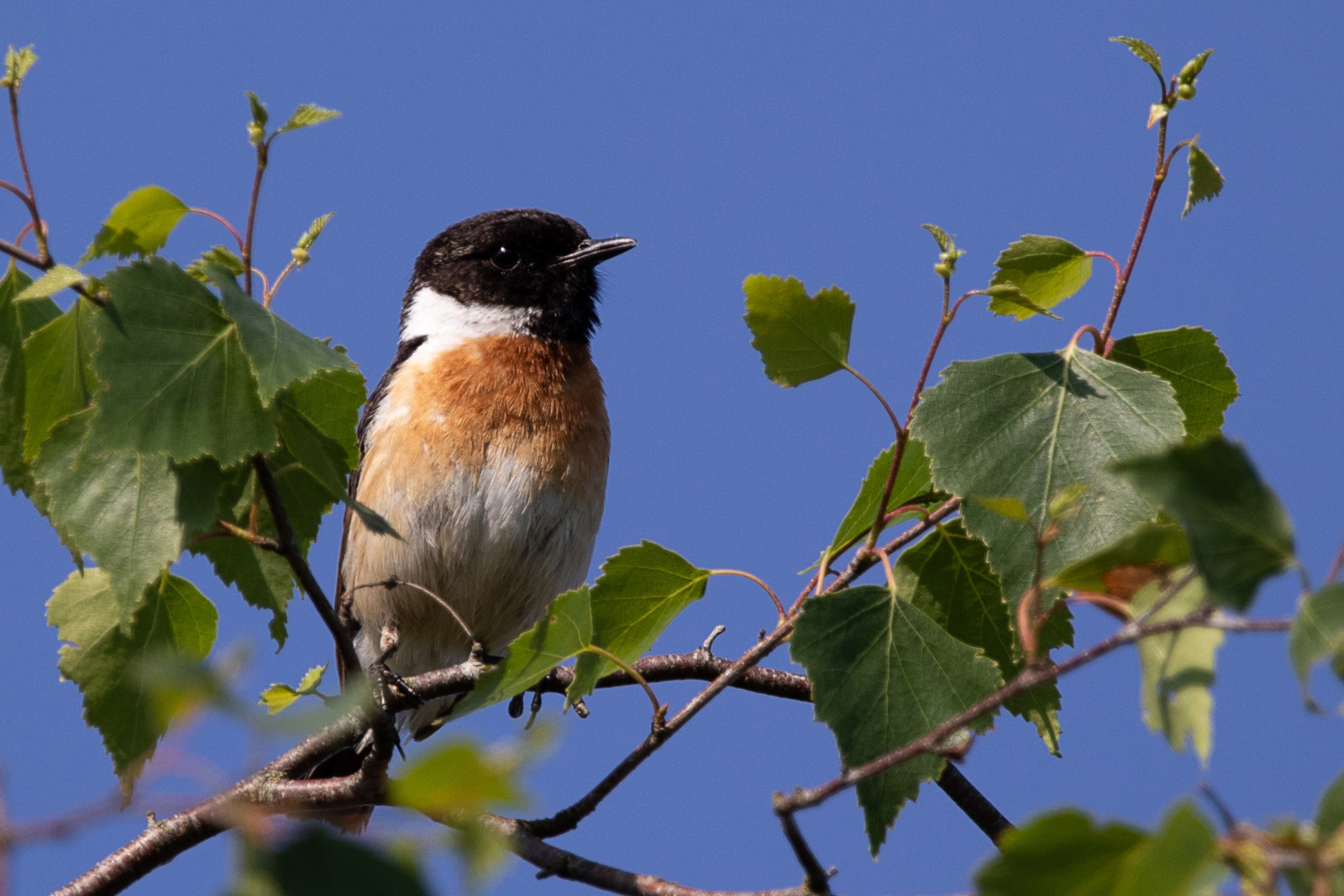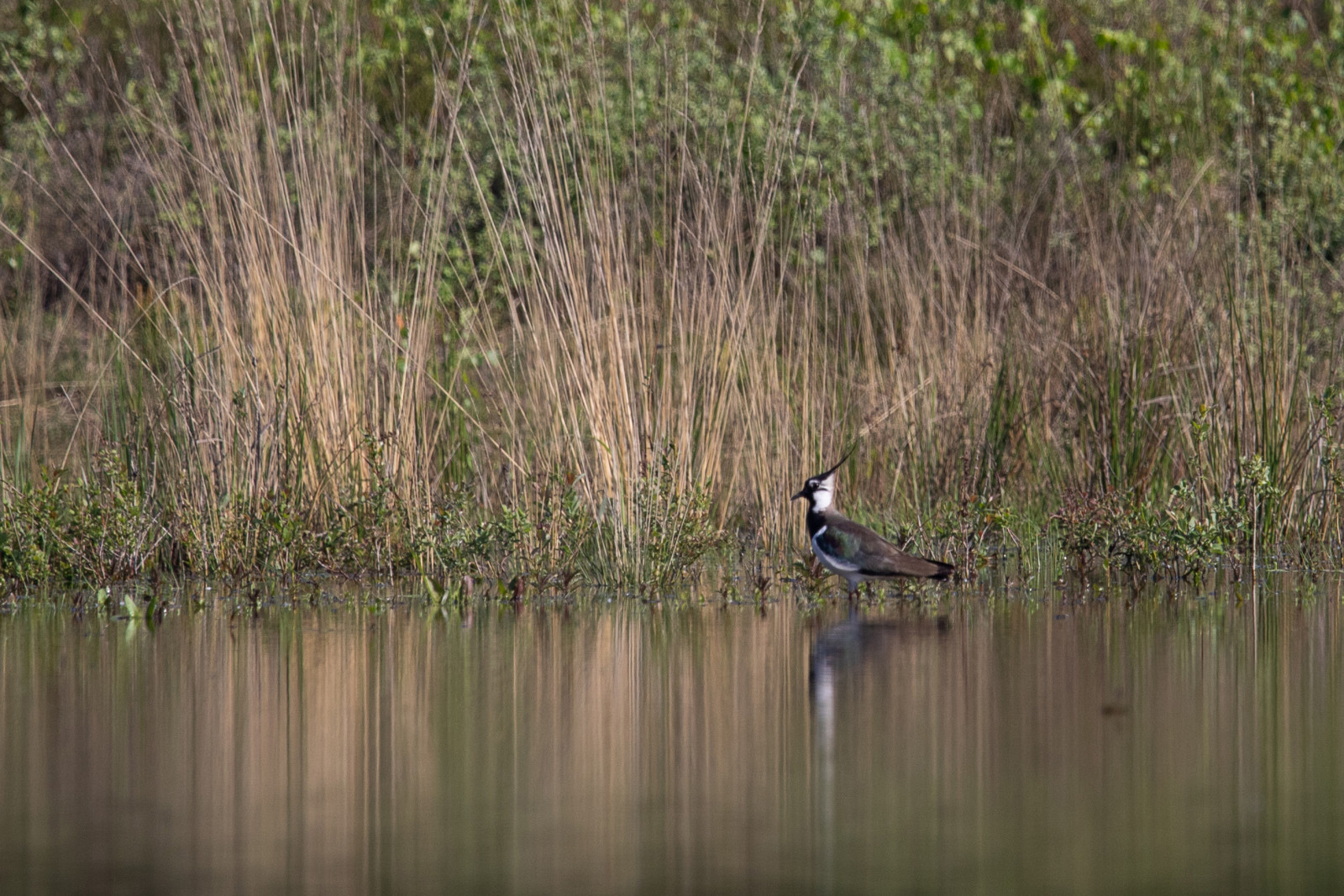Description
The Reindersmeer is located in the northern part of the Province of Limburg and lies between the Maas river to the West and the German border to the East. The area consists of two old sand extraction pits which, nowadays, are connected by water. A walking trails leads you around both pits and the landscape varies from heathland to deciduous forests and sand dunes.
The lake doesn't often provide large numbers of waterbirds, but the species that can be observed here are great! Small numbers of Black-necked Grebe can be seen mainly in the northwestern part of the lake, sometimes even in summer plumage. In the center of the lakes, Common Goldeneye can be seen diving for food. Other diving ducks, like Common Pochard en Tufted Duck can be seen in fairly large numbers sometimes. Little Grebe can be seen near the shoreline. The area is often visited by scarcer species of waterbird, like Common Scoter, Red-crested Pochard, Greater Scaup, Long-tailed Duck and Smew.
During migration, the lake also attracts rare migrating species, like Little Gull, Black Tern, White-winged Tern and Whiskered Tern. Several small islands are located near the shore and are mostly covered in reedbeds and small bushes. These islands are home to many species of reedbirds, like Bluethroat, Reed Bunting and Reed Warbler. Icterine Warbler and Common Nightingale can be heard from the bushes as well. The small heathlands and adjacent deciduous forests provide a great habitat for species, like European Stonechat, Whinchat, Wood Lark and, in winter, Great Grey Shrike. The forests are great for many species of songbird and woodpeckers, like Eurasian Bullfinch, Crested Tit and Black Woodpecker.
_________________________
Nederlands: Het Reindersmeer is een groot meer gelegen tussen de Maas en de Duitse grens en biedt een ideaal leefgebied voor vele vogelsoorten. Het gebied bestaat uit twee oude zandwinputten die tegenwoordig door water met elkaar zijn verbonden. Een wandelpad leidt je rond beide putten en het landschap varieert van heide tot loofbossen en zandduinen.
Het meer levert niet vaak grote aantallen watervogels op, maar de soorten die hier te zien zijn zijn geweldig! Kleine aantallen Black-necked Grebe zijn vooral te zien in het noordwestelijke deel van het meer, soms zelfs in zomerkleed. In het midden van de meren kun je Common Goldeneye zien duiken naar voedsel. Andere duikeenden, zoals Common Pochard en Tufted Duck, zijn soms in vrij grote aantallen te zien. Little Grebe is te zien nabij de oevers. Het gebied wordt vaak bezocht door zeldzamere watervogelsoorten, zoals Common Scoter, Red-crested Pochard, Greater Scaup, Long-tailed Duck en Smew.
Tijdens de trek trekt het meer ook zeldzame migrerende soorten aan, zoals Little Gull, Black Tern, White-winged Tern en Whiskered Tern. Verschillende kleine eilanden liggen dichtbij de oevers en zijn meestal bedekt met rietvelden en kleine struiken. Deze eilanden herbergen vele soorten rietvogels, zoals Bluethroat, Reed Bunting en Reed Warbler. Icterine Warbler en Common Nightingale zijn ook te horen vanuit de struiken. De kleine heidevelden en aangrenzende loofbossen bieden een habitat voor soorten als European Stonechat, Whinchat, Wood Lark en, in de winter, Great Grey Shrike. De bossen zijn geweldig voor vele soorten zangvogels en spechten, zoals Eurasian Bullfinch, Crested Tit en Black Woodpecker.
Details
Access
The area is easy accessable from the parking lot near the visitors center. You can walk around both lakes or take the shortcut about halfway by taking the small raft.
_________________________
Nederlands: Het gebied is gemakkelijk te bereiken vanaf de parkeerplaats bij het bezoekerscentrum. Je kunt rond beide meren lopen of halverwege de kortere weg nemen door het kleine vlot te nemen.



